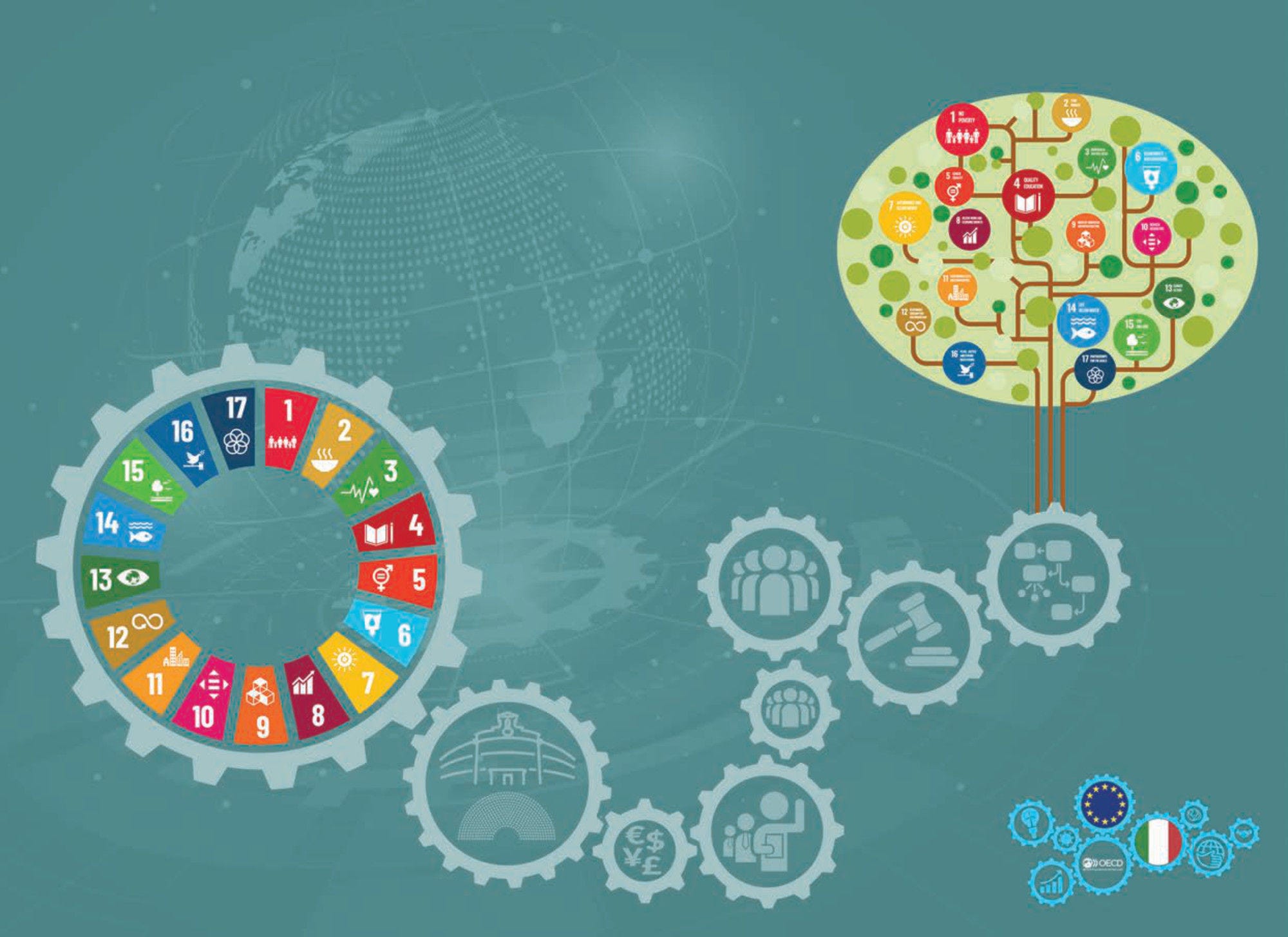Overview:
The NSDS/SNSvS represents the political framework to implement the 2030 Agenda and its SDGs in Italy.
Produced by:
The NSDS has been approved with Delibera CIPE (108/2017) in December 2017 after a consultative formulation process. The 2022 NSDS revision proposal will be presented to the Interministerial Committee for Ecological Transition (CITE) for approval in 2022 (Dlgs Art. 34 co 3, 152/2006) and includes the National Action Plan for PCSD.
Addressed to:
Line ministries, Regions, local authorities and the National Forum for SD as the reference policy framework for sustainability. The public at large to engage in plans and projects.
Characteristics:
The Italian SNSVS/NSDS is structured around the five areas of the Agenda 2030: People, Planet, Prosperity, Peace and Partnership. The 5Ps of the SNSVS/NSDS are spelled out in a system of strategic choices and national strategic objectives, specific to the Italian context.
Enablers for implementation:
Complementary to the “5P”, the 2022 NSDS/SNSvS revision proposal provides for a set of enablers for its implementation (Vettori). This is where the PCSD is endorsed as the reference approach at all levels.
The section dedicated to Vettori is complementary to this proposed Action Plan in identifying fundamental levers to initiate, manage, disseminate and monitor the integration of sustainability into national policies, as well as to stimulate an active participation from private sector, citizens and civil society organisations. Overall, three types of Vettori have been defined, accompanied by related cross-cutting Trajectories.
Monitoring mechanisms:
The Ministry for Ecological Transition (MiTE) is responsible for reporting every year on the overall implementation of the SNSvS/NSDS to CITE. This Implementation Report builds on the collaboration with all the actors and specifically with the Ministry of Foreign Affairs and Development Cooperation (MAECI) on the international dimension. MiTE is also responsible for updating the NSDS every three years. To support the domestic implementation of the NSDS, MiTE created over the last three years a constructive dialogue with central administrations, regions, autonomous provinces, and metropolitan areas as well as with the National Forum. On this basis MITE led a dialogue to co-revise the SNSvS/NSDS. The 2022 NSDS revision proposal includes numeric targets and a set of core primary indicators. The targets and indicators have been identified through a multi-stakeholder process and then validated with ISTAT and ISRA. They are aligned with the indicators included in fundamental programmatic schemes such as the NRRP, the Cohesion Policies National Partnership Agreement, the National Ecological Transition Plan (PiTE), the Economic and Financial Document (DEF).
Other countries’ experience: Finland
The “Finland we want by 2050”, adopted in 2014 and updated in 2016, aims at reconciling economic, social and environment imperatives. The strategy provides a long-term strategic framework for a whole-of-society commitment to sustainable development.
The Prime Minister’s Office co-ordinates national SDG implementation. An interministerial Coordination Network consisting of sustainable development focal points from each line ministry supports the co-ordination function of the PMO. The National Commission on Sustainable Development (NCSD), a prime minister led multi-stakeholder forum, brings together the public and private sectors, Civil Society Organizations, academia and municipalities and regions with the task of integrating sustainable development into Finnish policies, measures and everyday practices at different levels.








